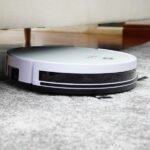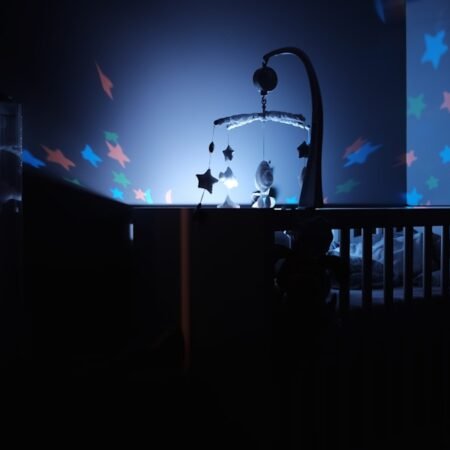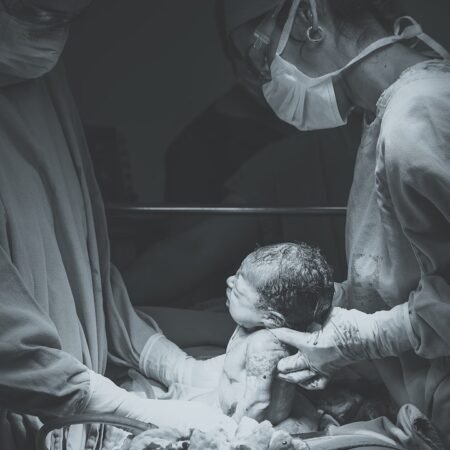When it comes to creating the perfect sleep environment for your newborn with a bassinet, the first step is to choose the right location for the bassinet. It’s important to place the bassinet in a quiet and peaceful area of the house, away from any potential sources of noise or distraction. This will help to create a calm and soothing atmosphere for your baby to sleep in. Additionally, it’s important to consider the proximity of the bassinet to your own sleeping area. Many parents find it helpful to have the bassinet located close to their own bed, making it easier to tend to their baby during the night. However, it’s important to ensure that the bassinet is placed in a safe location, away from any potential hazards such as curtains, blinds, or cords that could pose a risk to your baby.
Another important consideration when choosing the right location for the bassinet is the temperature of the room. It’s important to avoid placing the bassinet in an area that is too hot or too cold, as this can make it difficult for your baby to sleep comfortably. Instead, aim to place the bassinet in a room that is kept at a comfortable and consistent temperature, ideally between 68-72 degrees Fahrenheit. This will help to create an optimal sleep environment for your newborn, allowing them to rest peacefully and comfortably.
Key Takeaways
- Choose a quiet and peaceful location for the bassinet to ensure minimal disturbances for your newborn’s sleep
- Set up the bassinet with a firm mattress and fitted sheet to provide a safe and comfortable sleeping surface
- Create a calming atmosphere with soft lighting, white noise, and gentle rocking or swaying motions
- Manage light and noise levels by using blackout curtains and a white noise machine to promote quality sleep
- Maintain a comfortable temperature in the sleep environment and dress your newborn in appropriate sleepwear to prevent overheating or chilling
Setting Up the Bassinet for Optimal Comfort and Safety
Once you have chosen the right location for the bassinet, the next step is to set it up for optimal comfort and safety. Start by ensuring that the bassinet is assembled correctly and securely, following the manufacturer’s instructions carefully. It’s important to check that all parts are in good condition and that there are no loose or broken pieces that could pose a risk to your baby. Additionally, make sure that the mattress in the bassinet is firm and flat, as this will help to reduce the risk of Sudden Infant Death Syndrome (SIDS).
In addition to ensuring that the bassinet is set up safely, it’s also important to focus on creating a comfortable sleep environment for your newborn. Consider adding soft and breathable bedding to the bassinet, such as a fitted sheet and a lightweight blanket. However, it’s important to avoid using any loose bedding or soft toys in the bassinet, as these can pose a suffocation risk to your baby. Instead, focus on creating a simple and comfortable sleep space that will help your newborn to rest peacefully.
Creating a Calming and Soothing Atmosphere
Creating a calming and soothing atmosphere is essential when it comes to creating the perfect sleep environment for your newborn with a bassinet. One way to achieve this is by using white noise or gentle lullabies to help your baby relax and fall asleep. There are many different white noise machines and sound machines available that are specifically designed for use in nurseries and baby’s rooms. These machines can help to drown out any background noise and create a peaceful and calming atmosphere for your baby to sleep in.
Another way to create a calming and soothing atmosphere is by using soft and gentle lighting in the nursery. Consider using a dimmer switch or a nightlight to provide a soft and comforting glow in the room. This can help to create a relaxing environment for your baby, making it easier for them to fall asleep and stay asleep throughout the night. Additionally, consider using blackout curtains or shades to block out any excess light from outside, creating a dark and restful sleep environment for your newborn.
Managing Light and Noise Levels for Quality Sleep
| Factors | Recommendations |
|---|---|
| Location | Place the bassinet in your bedroom for the first 6 months |
| Temperature | Keep the room between 68-72°F (20-22°C) |
| Lighting | Use blackout curtains to create a dark environment |
| Noise | Use white noise machines to drown out household sounds |
| Sleeping Surface | Use a firm, flat mattress with a fitted sheet |
| Sleeping Position | Always place your baby on their back to sleep |
Managing light and noise levels is crucial when it comes to creating the perfect sleep environment for your newborn with a bassinet. It’s important to keep the room as dark as possible during nighttime sleep periods, as this can help to regulate your baby’s circadian rhythm and promote better sleep. Consider using blackout curtains or shades to block out any excess light from outside, creating a dark and restful sleep environment for your newborn.
In addition to managing light levels, it’s also important to consider noise levels in the nursery. While some babies may be able to sleep through background noise, others may be more sensitive to sound. Consider using white noise or gentle lullabies to help drown out any background noise and create a peaceful and calming atmosphere for your baby to sleep in. Additionally, try to keep any potential sources of noise, such as televisions or loud conversations, away from the nursery during nighttime sleep periods.
Temperature Control in the Sleep Environment
Temperature control is another important factor to consider when creating the perfect sleep environment for your newborn with a bassinet. It’s important to ensure that the room is kept at a comfortable and consistent temperature, ideally between 68-72 degrees Fahrenheit. This will help your baby to sleep comfortably and reduce the risk of overheating or becoming too cold during the night. Consider using a room thermometer to monitor the temperature in the nursery, making any necessary adjustments as needed.
In addition to monitoring the temperature in the nursery, it’s also important to dress your baby appropriately for sleep. Dress your baby in lightweight and breathable clothing, such as a onesie or sleeper, and consider using a swaddle or sleep sack to keep them warm without the need for loose blankets. This will help your baby to maintain a comfortable body temperature throughout the night, promoting better sleep and reducing the risk of SIDS.
Tips for Maintaining a Clean and Hygienic Sleep Space
Maintaining a clean and hygienic sleep space is essential when it comes to creating the perfect sleep environment for your newborn with a bassinet. Start by regularly washing and changing your baby’s bedding, including fitted sheets and any other bedding that comes into contact with your baby. This will help to reduce the risk of allergens and irritants that could disrupt your baby’s sleep.
Additionally, it’s important to keep the nursery clean and free from dust and other potential allergens. Regularly vacuum and dust the nursery, paying special attention to areas where dust can accumulate, such as under furniture and in corners. Consider using an air purifier in the nursery to help remove any potential allergens from the air, creating a clean and hygienic sleep space for your newborn.
Monitoring and Adjusting the Sleep Environment as Your Newborn Grows
As your newborn grows and develops, it’s important to monitor and adjust their sleep environment accordingly. Pay attention to any changes in your baby’s sleep patterns or behaviors, as this can be an indication that their sleep environment needs adjusting. For example, if your baby starts waking more frequently during the night or has difficulty falling asleep, it may be time to make changes to their sleep environment.
Additionally, as your baby grows older, you may need to transition them out of the bassinet and into a crib. When making this transition, it’s important to ensure that the crib is set up safely and comfortably for your baby. Consider using a firm mattress with fitted sheets, removing any loose bedding or soft toys from the crib, and ensuring that the crib meets current safety standards.
In conclusion, creating the perfect sleep environment for your newborn with a bassinet involves careful consideration of factors such as location, comfort, atmosphere, light and noise levels, temperature control, cleanliness, and monitoring as your baby grows. By following these guidelines and making adjustments as needed, you can help ensure that your newborn has a safe, comfortable, and soothing sleep environment that promotes healthy sleep habits from an early age.
FAQs
What is a bassinet?
A bassinet is a small bed specifically designed for newborns and young infants. It is typically smaller and more portable than a regular crib, making it a convenient option for parents who want their baby to sleep in the same room as them.
Why is it important to create the perfect sleep environment for a newborn?
Creating the perfect sleep environment for a newborn is important for their safety, comfort, and overall well-being. Newborns need a peaceful and secure sleep environment to promote healthy sleep patterns and development.
How can a bassinet contribute to the perfect sleep environment for a newborn?
A bassinet can contribute to the perfect sleep environment for a newborn by providing a cozy and secure sleeping space that is specifically designed for their size and needs. It allows parents to keep their baby close by during the night, promoting bonding and making nighttime feedings and comforting easier.
What are some tips for creating the perfect sleep environment for a newborn with a bassinet?
Some tips for creating the perfect sleep environment for a newborn with a bassinet include keeping the room at a comfortable temperature, using soft and breathable bedding, and placing the bassinet in a quiet and dimly lit area. It’s also important to follow safe sleep guidelines, such as placing the baby on their back to sleep and avoiding loose bedding or toys in the bassinet.
When should a newborn transition from a bassinet to a crib?
Newborns typically outgrow their bassinet by the time they reach 4-6 months of age or when they start showing signs of rolling over or pushing up on their hands and knees. At this point, it’s important to transition the baby to a crib to ensure their safety and comfort as they continue to grow and develop.






























